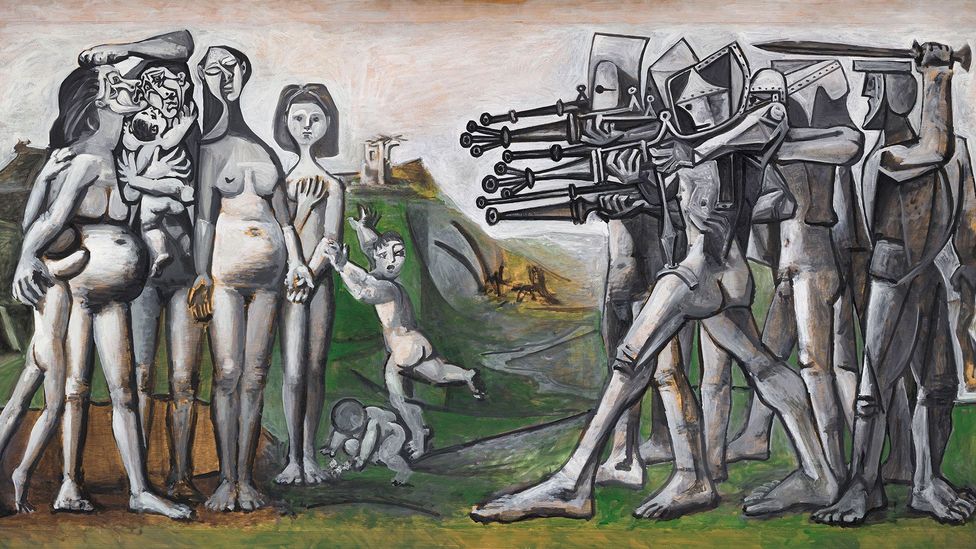
Robert Draws – Painting in cultural and political movements has always served as a powerful tool for change. Throughout history, artists have utilized this medium to express ideas, voice protests, and reflect societal shifts. In times of political unrest or social upheaval, paintings often capture the struggles, hopes, and dreams of the people. Whether it’s representing resistance, advocating for equality, or challenging authority, art becomes more than just a visual expression—it becomes a catalyst for action and reflection. These works of art not only document the struggles of their time but also inspire future generations to continue the fight for justice and freedom.
Throughout history, artists have used their works as a form of political protest. In times of political unrest, painting offers a platform for dissent and a voice for the marginalized. Famous movements, such as the Mexican muralism movement in the early 20th century, used large-scale paintings to address social issues and spread revolutionary ideas. Artists like Diego Rivera and David Siqueiros painted murals that depicted the struggles of the working class and indigenous peoples, calling for social and political reform.
Similarly, during the civil rights movement in the United States, artists like Jacob Lawrence and Charles White used painting to highlight the racial injustices faced by African Americans. Their works provided a visual representation of the fight for equality and justice, adding to the momentum of the political movement.
“Read about: The Intersection of Personality and Art: How an Artist’s Life Shapes Their Work”
Art has also been a catalyst for social change by highlighting issues such as gender inequality, poverty, and war. Paintings often bring attention to these problems by offering a vivid depiction of their impact on society. One famous example is the work of Picasso, particularly his painting Guernica, which denounced the Spanish Civil War and the horrors of bombing civilian populations. The painting became a global symbol of anti-war sentiment, illustrating the suffering and destruction caused by conflict.
In the feminist movement, artists like Frida Kahlo used painting to explore issues related to gender, identity, and personal suffering. Her powerful self-portraits challenged societal expectations of women and promoted a more inclusive view of female experiences. Kahlo’s art remains an important influence on contemporary feminist movements, as it speaks to the intersectionality of gender, culture, and personal identity.
Painting has always been a tool for cultural preservation and the expression of national identity. Throughout history, many cultures have used art to affirm their cultural values, traditions, and beliefs. In post-colonial societies, artists often turned to painting as a means of reclaiming their cultural heritage and asserting their autonomy. Indigenous artists in countries like Canada and Australia use painting to preserve and promote their unique cultural narratives, challenging the dominant narratives imposed by colonial powers.
The Harlem Renaissance in the United States was another example of how painting played a role in cultural identity. During this period, African American artists used their works to assert a distinct cultural identity and celebrate the richness of Black life and history. Artists such as Aaron Douglas and Archibald Motley painted scenes that reflected the African American experience, providing a platform for cultural expression and pride.
In the modern era, painting remains vital in political and cultural movements. Street art and social media provide platforms for visual activism. Artists like Banksy challenge political regimes and social norms through public art. Banksy’s works carry strong anti-capitalist and anti-establishment messages. These pieces resonate with people globally, sparking discussions and reflections. Contemporary artists address political issues like climate change, migration, and human rights. Their art seeks to inspire conversation and action. These paintings encourage viewers to engage and act in their communities.
“Read more: Eco-Friendly Garage Upgrades: Making Your Garage More Energy-Efficient”
One of the most powerful aspects of painting in cultural and political movements is its ability to tell stories. Through visual storytelling, paintings capture moments in time and convey emotions that words alone may struggle to express. Paintings have the ability to evoke empathy, provoke thought, and motivate people to take action. By engaging with art, individuals can gain a deeper understanding of the complexities of the world and their role in shaping its future.
In conclusion, painting remains a vital medium for cultural and political expression. Throughout history, artists have used their craft to reflect, protest, and inspire. By capturing the essence of societal struggles and triumphs, painting continues to play a significant role in shaping the world we live in today.